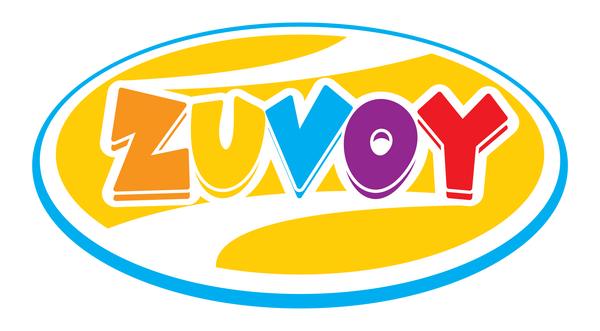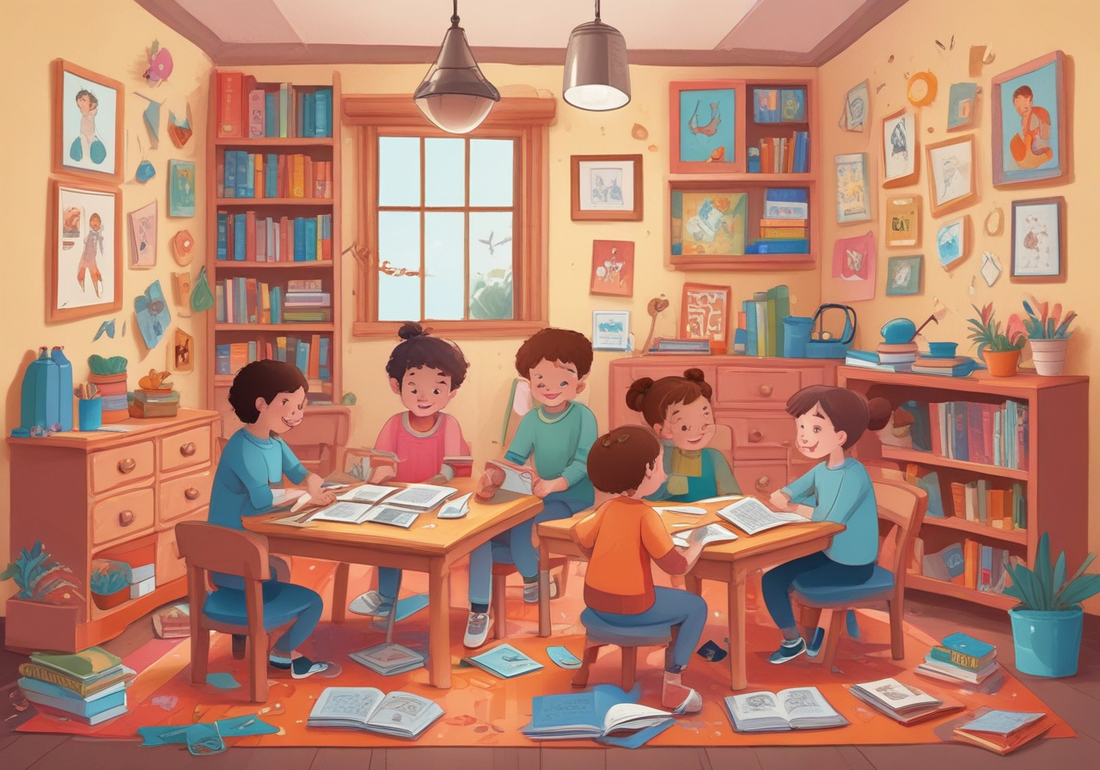Key Highlights
- Incorporate your child's interests into learning activities to make education enjoyable.
- Use play-based learning, such as treasure hunts and role-playing, to engage their imagination.
- Leverage educational apps and technology wisely to supplement traditional learning.
- Plan interactive and hands-on activities like DIY projects and outdoor games.
- Cultivate a love for learning by making it a fun and rewarding experience for your child.
Introduction
Adding fun learning activities to your child's daily routine can be very helpful for their growth. It makes learning fun and also boosts their critical thinking, problem-solving, and social skills. When you create a positive and engaging learning environment, you help your child enjoy learning for a lifetime.
Understanding the Importance of Fun in Learning
 When kids enjoy learning, they pay more attention and are open to new ideas. Fun helps them build a strong connection to what they learn, making it easier for them to remember things.
When kids enjoy learning, they pay more attention and are open to new ideas. Fun helps them build a strong connection to what they learn, making it easier for them to remember things.
Also, including fun in learning boosts critical thinking. When challenges are presented in an interesting way, kids are more likely to join in, think outside the box, and find solutions. This way, learning becomes an exciting adventure instead of just a task.
The Role of Engagement in Child Development
Engagement is very important in helping kids develop well-rounded social skills. When children are engaged, they are more likely to work well with others. This helps them build good teamwork skills.
Interactive learning activities often include discussions and sharing ideas. This helps improve their communication skills. As children share their thoughts and listen to others, they become better at expressing themselves clearly and confidently.
These positive learning experiences add to a child's overall growth. They help set up a strong foundation for success in the future.
How Fun Enhances Memory and Retention
Have you seen how kids easily remember stories or fun ideas? This happens because our brains work better when we feel good about what we learn. When learning is fun, it feels good and not like a boring job.
Adding fun things like games, puzzles, or making lessons into story time can really help kids learn better. Using their imagination makes learning more fun and helps them remember things for a long time.
Keep in mind, a playful way to learn can really help a child love learning and remember what they have learned and how to use it.
Preparing for Fun Learning at Home
Making a special learning space is important to reduce distractions and help with focused learning. Choose a spot in your home where your child can easily use learning materials. This could be a comfy corner, a bright desk, or even an outdoor area.
Also, collecting important things like art supplies, books, and educational games will give your child the tools they need to explore different subjects and learning styles.
Essential Resources and Materials
Having the right tools can really help your child learn better. You don't have to spend a lot on fancy gadgets. Simple items like crayons, paper, scissors, and glue can spark a lot of creativity and imagination.
Also, consider using technology! Many educational apps and websites have fun games and lessons for different ages. These digital tools make learning more exciting, especially for math and language skills.
Don't forget to use free resources like your local library. Libraries have many books, audiobooks, and even a free ebook library you can use at home.
Setting Up a Conducive Learning Environment
A good learning environment can greatly help your child focus and engage. Look for a quiet spot in your home where your child can study without getting distracted. This might be a special study room, a clean corner, or a cozy place outside.
Make sure the seating is comfortable. A good chair and desk at the right height can really improve your child’s comfort and posture. Natural light is key for a positive learning experience, so place their study area near a window if possible.
Finally, keeping the area organized helps with focus and cuts down on distractions. Use storage boxes, shelves, or special drawers to keep learning tools neat and easy to find.
Step-by-Step Guide to Making Learning Fun
 Turning education into an adventure means adding fun activities and using creative ways to spark your child's curiosity. You can use play-based learning to change lessons into fun games and exciting experiences.
Turning education into an adventure means adding fun activities and using creative ways to spark your child's curiosity. You can use play-based learning to change lessons into fun games and exciting experiences.
Also, use technology as a helpful tool for learning. Educational apps, fun websites, and cool videos can make learning enjoyable and effective. Remember, being flexible and open to new ideas is important. Try different methods to see what works best for your child's style of learning.
Step 1: Identify Your Child's Interests
The first step to making learning fun is to focus on your child's interests. Pay attention to what makes them curious. Do they like books, music, nature, or building things? Knowing what they love can help you find fun activities for them.
For example, if your child loves dinosaurs, you can include dinosaur-themed activities in different subjects. They can explore history, geography, and even math while learning about their favorite dinosaurs.
As parent and educational author Isabel Thomas says, "Follow your child's lead. What are they drawn to? What questions do they ask? Focusing on their interests is a great way to make them excited about learning."
Step 2: Incorporate Play-Based Learning Techniques
Play is how children communicate, and using play-based learning can make teaching very effective. You can turn lessons into fun games, like a treasure hunt where kids solve math problems, spell words, or answer trivia questions to find clues.
Don't forget about the outdoors! A nature walk can be a great time to learn about plants, bugs, and the local environment. Encourage your child to look around, ask questions, and interact with what they see.
Role-playing is another wonderful way to make learning exciting. Let your child pretend to be historical figures, characters from books, or even jobs they find cool.
Step 3: Use Technology and Apps Wisely
While too much screen time can be harmful, using technology wisely can help a child's learning. Many educational apps and websites serve different ages and subjects. They provide fun games, puzzles, and lessons.
Look for apps that build important skills like language skills, problem-solving, and critical thinking. Add educational videos to help them understand different topics better.
Balance is important here. Set proper screen time limits. Make sure technology supports other learning activities, like reading, hands-on tasks, and outdoor play.
Step 4: Plan Interactive and Hands-On Activities
Engagement goes up when children take part in learning. DIY projects are an excellent way to spark creativity, solve problems, and feel good about completing tasks.
Don't ignore how important outdoor play is! Get them involved in activities like building a birdhouse, planting a garden, or setting up a simple obstacle course. Outdoor play helps them stay active and teaches them about nature and the environment.
Adding a little friendly competition can make learning fun. Plan a family game night with educational board games, trivia, or even charades focused on a specific subject.
Creative Learning Activities and Games
There are many creative ways to learn that can make ordinary days special. You can have a family game night with educational board games, interesting puzzles, or word games that help with vocabulary and spelling skills.
You can also inspire a love for science with simple DIY science experiments. These fun activities help make difficult ideas easier to understand, encouraging curiosity and a desire to learn more.
Educational Board Games and Puzzles
Educational board games and puzzles do more than just entertain. They are great ways to improve thinking skills while having fun. These games help children learn to think ahead, make choices, and see what might happen next.
Here are some benefits of adding these games to your child's daily life:
- Enhanced Critical Thinking: Board games and puzzles present challenges. They require kids to think carefully and make smart choices.
- Improved Problem-Solving Abilities: While playing, they will face problems that need creative ways to fix them.
- Teamwork and Social Skills: Many games need players to work together, talk, and make deals, which helps build good social skills.
DIY Science Experiments
Bring science to life with fun DIY science experiments you can do at home. You only need common materials. These hands-on activities make learning science enjoyable and memorable.
Help your child follow the scientific method by asking questions, making guesses, running experiments, and looking at the results. Simple things like making a volcano, creating a homemade lava lamp, or watching a plant's life cycle can ignite a love for science that lasts a long time.
These experiments not only help them understand scientific ideas better, but they also build observation skills, improve critical thinking, and create a sense of wonder about the world.
Conclusion
Learning should be fun for kids. This helps them grow and develop. When you make home activities enjoyable, it boosts their interest, memory, and overall learning. Know what your child likes. Use games, play, and hands-on activities to make learning exciting. Try educational games, fun DIY projects, and tools that kids can interact with. This creates a great atmosphere for learning. When kids love to learn from a young age, it helps them do well in school later on. Remember, playtime is not just fun; it also teaches helpful skills. Begin to make learning fun today!
Frequently Asked Questions
How can I encourage my child to enjoy learning?
Use creative ways to include their interests in fun learning ideas. Praise their efforts with positive reinforcement. Find new and exciting ways to make learning feel like an adventure. Encouragement and positive feedback really help boost their motivation. This will make them eager to learn.
What are some inexpensive learning activities?
Use free resources like nature walks, trips to the local library, and your imagination for learning that doesn't cost anything. Reading together, telling stories, and playing creatively are all great ways to learn without spending money.
How do digital tools contribute to fun learning?
Interactive apps, multimedia resources, and virtual field trips mix education with fun. This is often called edutainment. Using technology helps make learning more interesting. It looks good and is easy to access. This is especially helpful for visual and auditory learners.
Can learning through play really improve academic skills?
Play-based learning is very important for brain growth and learning new skills. When kids learn by playing, they gain important social, emotional, and mental abilities. These skills help them do well in school.
How often should I introduce new activities to keep learning engaging?
You can keep your child interested by starting a new topic or activity every few days or once a week. Pay attention to what they enjoy. Change your lesson plan to match their interests. Feel free to try different methods to see what fits their learning speed and likes best.

